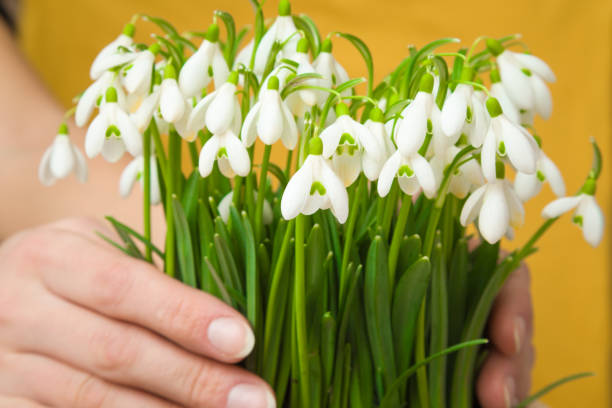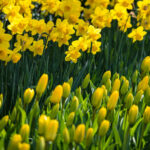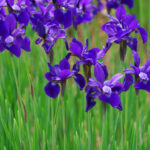Galanthus, commonly known as snowdrops, are among the earliest blooming flowers of the year, often appearing while snow still blankets the ground. These delicate white flowers belong to the Amaryllidaceae family and are cherished for their resilience, beauty, and symbolic association with hope and renewal. In this detailed exploration of Galanthus, we will delve into their origins, species, cultivation, symbolic significance, and place in garden design, offering a comprehensive look at one of nature’s most beloved early bloomers.
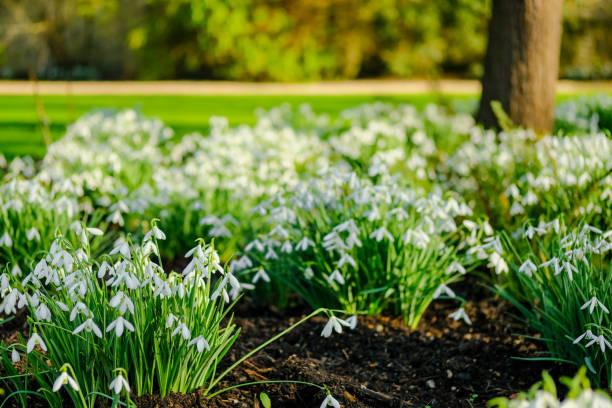
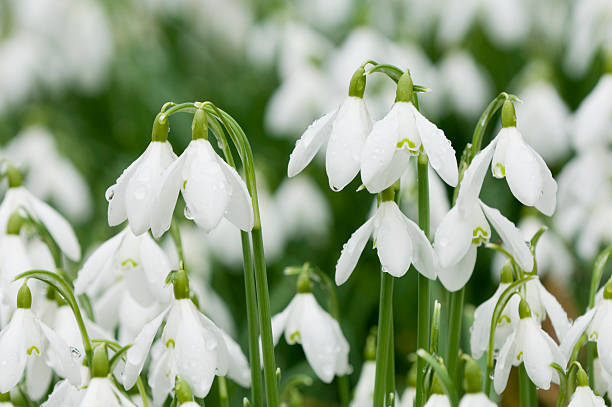

Origins and Natural Habitat
Galanthus is native to Europe and parts of the Middle East, particularly in regions that experience cold winters and cool springs. Snowdrops thrive in temperate climates, where they can take advantage of the moist soil and cooler temperatures of late winter and early spring. They typically grow in woodland areas, grasslands, and along riverbanks, where they receive partial shade and moist but well-drained soil.
Historically, Galanthus has been noted in literature and botanical texts for centuries. They have long been admired for their ability to bloom in harsh conditions, often pushing through snow and ice, which has earned them a place in various cultural traditions and symbolic associations. The earliest botanical documentation of snowdrops dates back to the 16th century, although they were likely known to people long before that.
Species of Galanthus
There are approximately 20 species of Galanthus, with variations in size, flower shape, and bloom time. Here are some of the most notable species:
- Galanthus nivalis
This is the most common and widely cultivated species of snowdrop. It’s known for its nodding, white bell-shaped flowers with green inner markings. Galanthus nivalis typically grows to about 10-15 cm in height and blooms from late winter to early spring. It’s often found naturalized in gardens, woodlands, and along roadsides in many parts of Europe and North America. - Galanthus elwesii
This species, commonly called the giant snowdrop, is larger than G. nivalis, both in terms of flower and foliage size. It is native to Turkey and the Balkans and can reach heights of up to 25 cm. Its flowers are similar to G. nivalis but have broader petals and a more robust appearance. This species is particularly prized for its early blooming period, sometimes flowering as early as January. - Galanthus plicatus
Also known as the Crimean snowdrop, G. plicatus is notable for its folded leaves, which have a distinctive pleat along the edges. Native to the Crimean Peninsula, this species is slightly larger than G. nivalis and is favored for its vigorous growth and ability to naturalize in gardens. - Galanthus woronowii
This species, native to the Caucasus, is known for its glossy green leaves and more upright stature. G. woronowii blooms slightly later than some other species, typically in late winter or early spring, making it a good choice for extending the snowdrop season in a garden. - Galanthus reginae-algae
This is an autumn-blooming species, native to southern Europe. It produces flowers in early autumn, sometimes as early as October, which is a striking contrast to the more common winter-blooming varieties.
Growing and Cultivating Galanthus
Snowdrops are relatively easy to grow and are ideal for gardeners who wish to bring a touch of spring to their winter landscape. Here are some key considerations when cultivating Galanthus:
1. Planting
Snowdrops are typically planted as bulbs in the autumn, ideally in September or October, so that they can establish roots before the cold winter sets in. The bulbs should be planted at a depth of around 5-10 cm and spaced about 10 cm apart to allow for natural spreading.
Snowdrops prefer well-drained, humus-rich soil and a location that receives partial shade, mimicking their natural woodland habitat. They do well when planted under deciduous trees, where they can take advantage of the early spring sunlight before the tree canopy fills in.
2. Watering
While snowdrops require moist soil during their active growing season (late winter to early spring), they do not tolerate waterlogged conditions. It’s essential to ensure proper drainage, particularly in the winter months, to prevent bulb rot.
3. Fertilizing
Snowdrops do not require heavy fertilization. A light application of a balanced, organic fertilizer in the fall, just before they bloom, can help support vigorous growth. Compost or well-rotted manure can also be worked into the soil at planting time.
4. After Bloom Care
Once snowdrops have finished blooming, their leaves should be left to die back naturally. This process allows the plant to store energy in the bulb for next year’s growth. The foliage can be cut back once it has turned yellow and withered.
Naturalizing Snowdrops
One of the great advantages of snowdrops is their ability to naturalize in a garden setting. Over time, a small patch of snowdrops can spread to form large colonies, creating a beautiful early spring display. To encourage naturalization, bulbs should be planted in groups rather than rows, mimicking the random patterns in which they grow in the wild.
Snowdrops can also be divided and transplanted “in the green,” meaning while they are still in leaf, which is often more successful than planting dry bulbs. This method ensures that the plants are established quickly in their new location.
Symbolism and Cultural Significance
Snowdrops have long been associated with the coming of spring and the renewal of life. In many cultures, they are seen as symbols of hope, purity, and new beginnings, as they are among the first flowers to bloom after the dark, cold winter months.
In Victorian England, snowdrops were considered bad luck if brought indoors, as they were often associated with death and mourning due to their white, shroud-like petals. However, this superstition has largely faded, and snowdrops are now cherished for their beauty and resilience.
In Christian tradition, snowdrops are sometimes referred to as “Candlemas Bells” because they often bloom around February 2nd, the date of Candlemas, which marks the presentation of Christ in the temple and the purification of Mary.
Snowdrops in Garden Design
Galanthus are versatile plants that can be used in various garden settings. Their early bloom time makes them ideal companions for other spring-flowering bulbs such as crocuses, daffodils, and winter aconites. Snowdrops are particularly effective when planted in drifts in woodland gardens or under deciduous trees, where they can create a naturalistic, wildflower effect.
They also pair well with hellebores and cyclamen, which bloom around the same time, creating a multi-layered display of early spring color. In rock gardens or along the edges of paths, snowdrops can be used to soften hard lines and add a touch of delicacy to the landscape.
Conservation and Protection
Many species of Galanthus are threatened in their natural habitats due to habitat destruction, over-harvesting, and climate change. In some regions, snowdrops are protected by law, and it is illegal to dig up or collect wild snowdrop bulbs without permission. Gardeners are encouraged to purchase snowdrops from reputable suppliers who grow bulbs sustainably rather than from sources that may be contributing to the depletion of wild populations.
Conclusion
Galanthus, with their delicate beauty and hardy nature, are a testament to the resilience of life. These early-blooming flowers have captured the hearts of gardeners and nature lovers alike, offering a sign of hope as winter fades and spring begins to awaken. Whether naturalized in a woodland garden or planted in clusters near a home, snowdrops bring a touch of grace and elegance to any landscape. Their symbolism, combined with their practical ease of cultivation, makes them a beloved choice for gardeners seeking both beauty and meaning in their planting choices.

